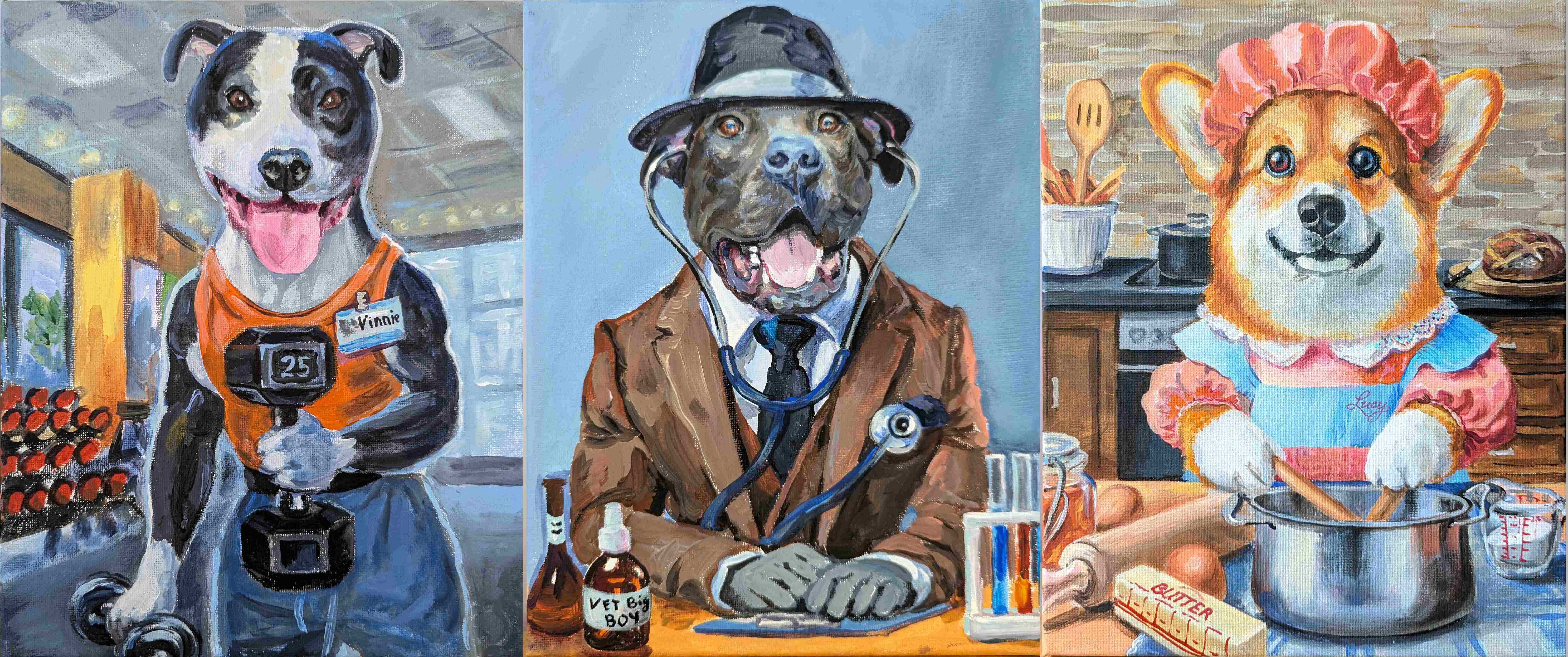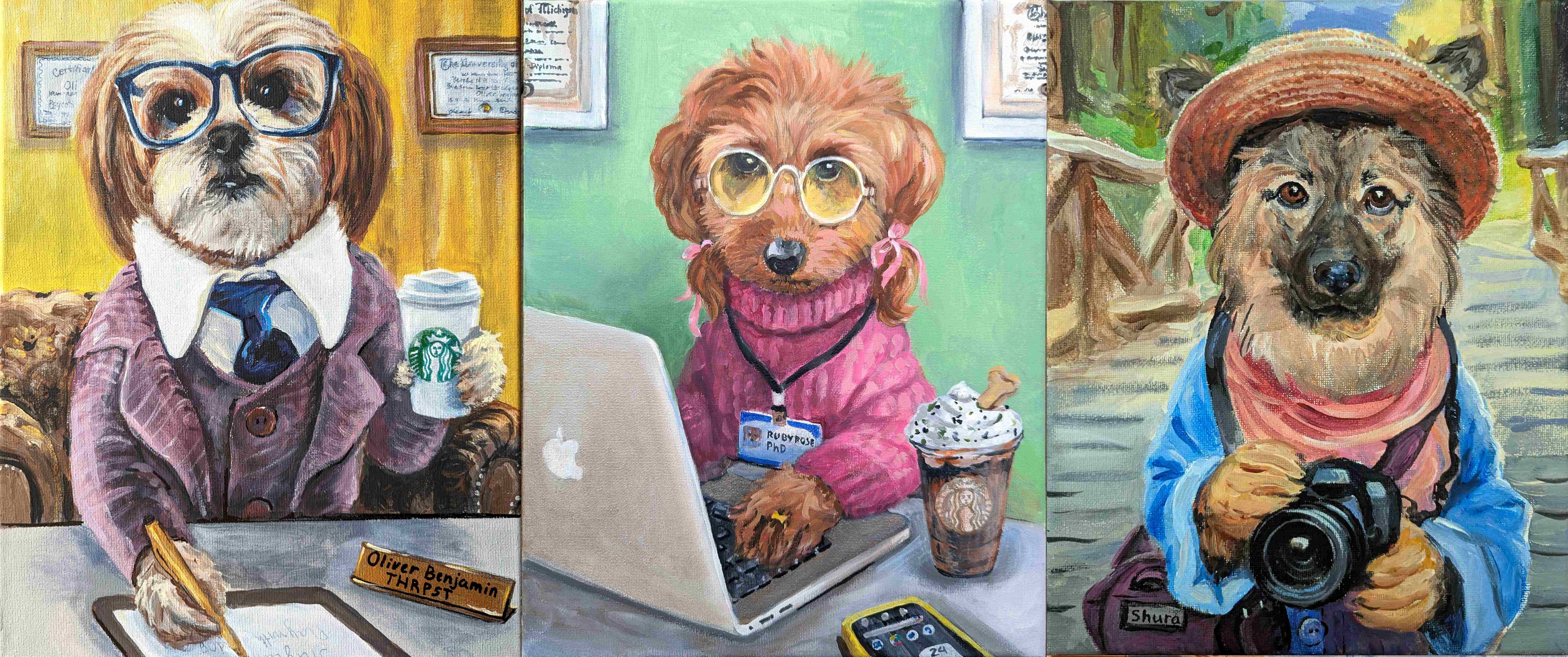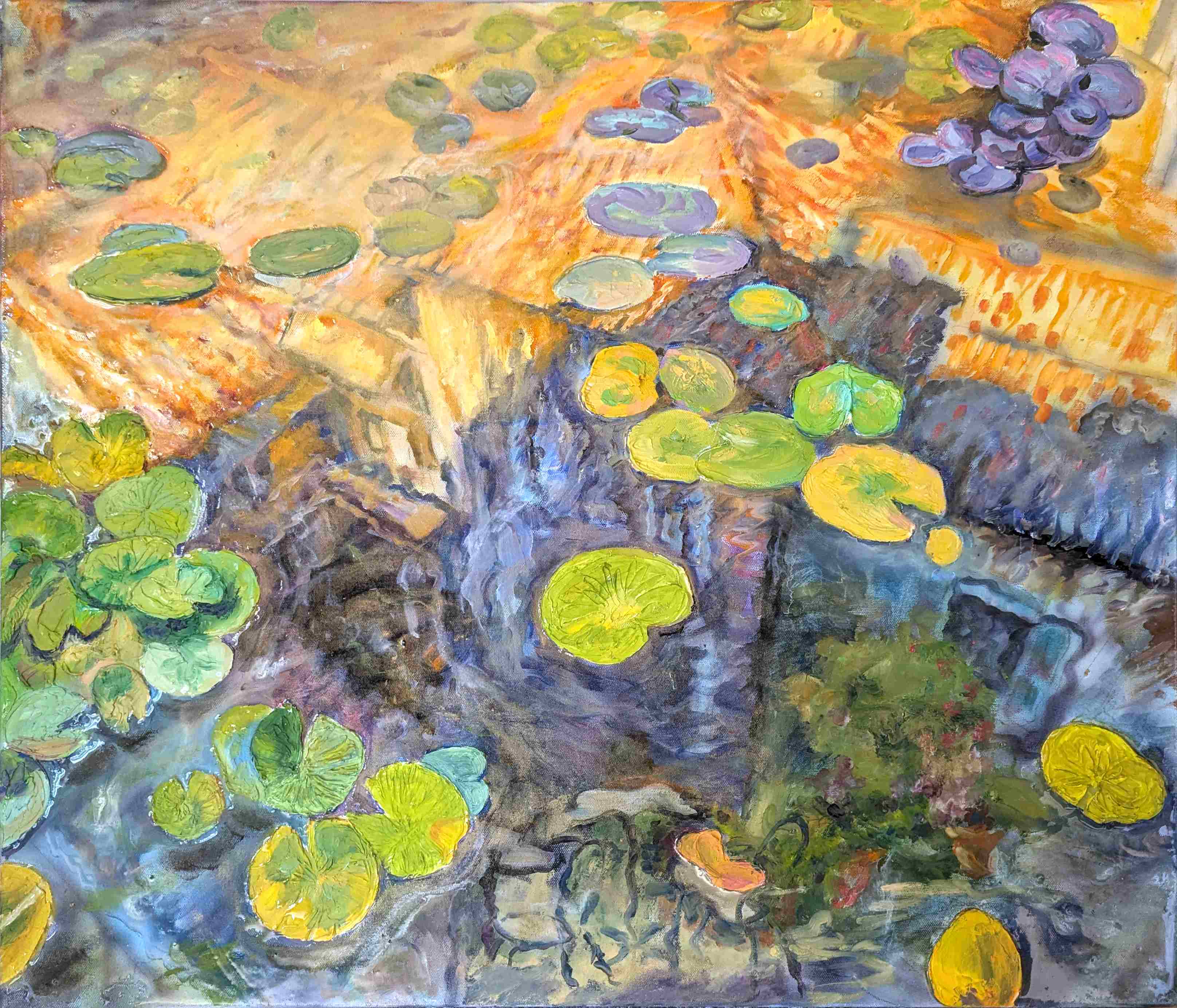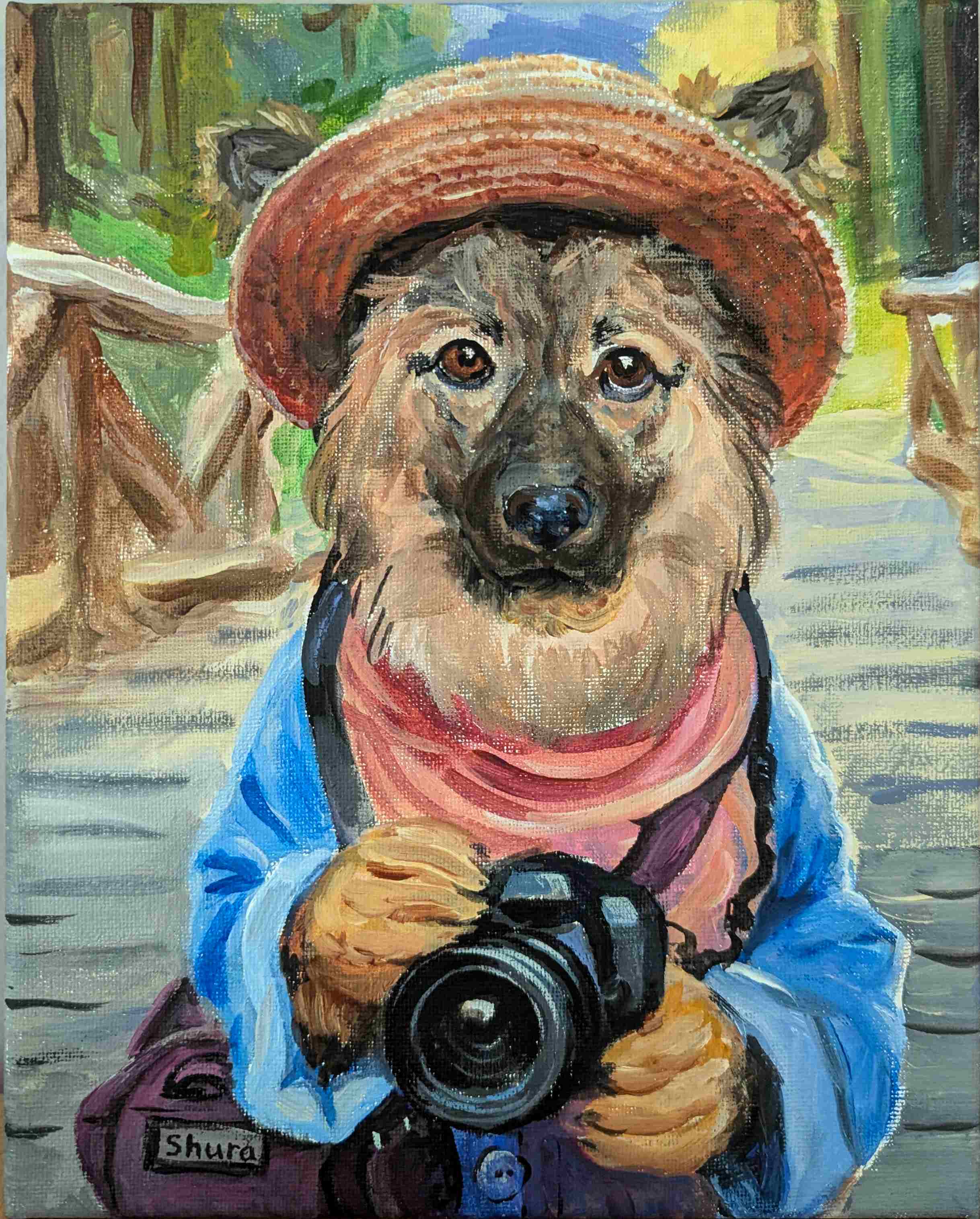Benefits of Art for Physical Skills
The Importance of Art for Fine Motor Skills, Nerve Health, and Vision Sharpness
Art is not just a medium for creative expression; it also plays a crucial role in enhancing fine motor skills, nerve health, and vision sharpness. Engaging in artistic activities can provide numerous benefits, particularly for the development and maintenance of these essential physical abilities.
Fine Motor Skills
Fine motor skills involve the coordination of small muscles in the hands and fingers, which are essential for tasks such as writing, drawing, and manipulating small objects. Art activities like painting, sculpting, and drawing require precise hand movements, which help to improve dexterity and hand-eye coordination. For example, when children engage in finger painting, they develop their hand motor skills by manipulating paint with their fingers, enhancing their manual dexterity1. Similarly, adults can benefit from activities like detailed sketching or mosaic creation, which require steady hands and precise movements.
Nerve Health
The repetitive and detailed movements involved in creating art can stimulate nerve endings in the fingers, promoting better nerve health. This is particularly important for maintaining the sensitivity and functionality of the fingertips. Engaging in activities that require fine motor control, such as airbrushing or detailed painting, can help keep the nerves in the fingers active and healthy. This stimulation can be beneficial for individuals of all ages, helping to prevent conditions like neuropathy and maintaining overall nerve health.
Vision Sharpness
Artistic activities also contribute to the sharpness of vision. When creating art, individuals must focus on fine details, which can help improve visual acuity and hand-eye coordination. For instance, when working on a detailed pet portrait or a complex mosaic, artists must carefully observe and replicate intricate patterns and colors. This practice can enhance visual perception and the ability to distinguish fine details, which is crucial for both artistic endeavors and everyday tasks.
Practical Applications
At my art studio, Rush In Art Academy, I emphasize these benefits to my students. Offering classes that focus on detailed work, such as custom pet portraits or intricate mosaics, can help students develop their fine motor skills and improve their nerve health and vision sharpness. Encouraging students to engage in these activities regularly provides long-term benefits, enhancing their artistic abilities and overall physical health.
Incorporating these elements into my teaching approach makes art at Rush In Art Academy not only a creative outlet but also a valuable tool for physical development. Hope these highlights inspire my art students to appreciate the multifaceted benefits of engaging in artistic activities.
The Importance of Teaching Basic Drawing Skills to Every Child
In Rush In Art Academy we make an accent on basic drawing skills in all our art classes for kids and adults. You will ask why. It may be "boring" for my kids, for me. Here is why:
In today’s fast-paced world, where digital entertainment often takes precedence, the value of teaching basic drawing skills to children cannot be overstated. While entertaining art projects have their place, providing a foundation in drawing offers numerous benefits that extend beyond the canvas.
Building Fundamental Skills
Basic drawing skills are the building blocks of all visual arts. They teach children how to observe the world around them, understand proportions, and develop hand-eye coordination. These skills are essential for more advanced artistic endeavors and can be applied to various forms of art, from painting to sculpture.
Enhancing Cognitive Development
Drawing is not just about creating images; it’s a cognitive exercise that enhances critical thinking and problem-solving skills. When children learn to draw, they engage in a process that requires planning, spatial reasoning, and attention to detail. This cognitive engagement can improve their academic performance in subjects like math and science.
Encouraging Creativity and Expression
While entertaining art projects are fun, they often come with predefined outcomes. Teaching basic drawing skills, on the other hand, encourages children to explore their creativity and express themselves uniquely. It allows them to create original works of art, fostering a sense of accomplishment and boosting their self-esteem.
Developing Patience and Perseverance
Learning to draw requires practice and patience. Children learn that mastery doesn’t come overnight and that persistence is key to improvement. This lesson in perseverance is invaluable and can be applied to many areas of life, teaching children the importance of dedication and hard work.
Providing a Therapeutic Outlet
Art, including drawing, can be a therapeutic activity. It provides children with a healthy way to express their emotions and cope with stress. Basic drawing skills give them the tools to articulate their feelings visually, which can be particularly beneficial for those who find it challenging to express themselves verbally.
Preparing for Future Opportunities
For children who develop a passion for art, having a strong foundation in drawing can open doors to future opportunities. Whether they pursue a career in the arts or use their skills in other fields, the ability to draw can be a valuable asset. It can lead to careers in graphic design, architecture, animation, and more.
Conclusion
While entertaining art projects have their place in fostering a love for creativity, teaching basic drawing skills provides children with a solid foundation that benefits their overall development. It equips them with essential skills, enhances cognitive abilities, encourages creativity, and prepares them for future opportunities. By investing in basic drawing education, we give children the tools they need to succeed both in art and in life.
Same is true for adult art classes, too. Although the basic skills are not required for adults coming to art class at Rush In Art Academy mostly for fun, the skills will make their creative process more smooth and relaxed.
Change in consumer interests that happened for the last 20 years in fine art market.
Before, people were ordering the portraits of their kids; now, they order the portraits of their dogs or cats.
Here is what me and ai think about this trend.
The trend of childless households and the growing popularity of pet ownership likely intersect in shaping consumer interests in fine art. As more people opt for pet companionship over having children, their emotional bonds with their furry friends drive demand for personalized pet portraits. These artworks capture the unique personalities and cherished memories associated with beloved dogs and cats. 🐾🎨
Moreover, this shift reflects broader cultural changes, emphasizing the significance of pets in our lives. Whether it’s a whimsical cat portrait or a dignified dog painting, these artworks resonate with pet owners on a deep level. 🐶❤️ Traditionally, people commissioned portraits of their children. However, in recent years, there’s been a shift. Pet portraits—especially of dogs and cats—have gained popularity. Pet owners now seek personalized artworks capturing their beloved companions3.
Here are the collage of portraits I did 20 years ago and here are what I ended up doing now. No complaints, Rush In Art is a very flexible art studio where you can try all media and subjects you can or cannot imagine.
See you in my art classes and, Pet lovers, see you in my Etsy shop www.natapetportrait.etsy.com






Creating Stunning Light Effects with Resin and Modeling Paste: A Case Study of Water Lily Painting
In the world of art, the use of resin and modeling paste has revolutionized the way artists create texture and light effects in their paintings. These materials allow for a dynamic interplay of light and shadow, adding depth and dimension to the artwork. Let’s explore how these techniques are applied, using a beautiful water lily painting as an example.
The Magic of Resin
Resin is a versatile medium that can be used to create a glossy, glass-like finish on paintings. When applied to specific areas, it enhances the luminosity and vibrancy of the colors, making them pop. In the water lily painting, resin is used to highlight the petals and water, creating a reflective surface that mimics the natural sheen of water. This not only adds a realistic touch but also draws the viewer’s eye to these focal points.
Adding Depth with Modeling Paste
Modeling paste is another powerful tool in an artist’s arsenal. It can be applied to the canvas to create raised, textured areas that add a tactile dimension to the painting. In the water lily painting, modeling paste is used to build up the petals and leaves, giving them a three-dimensional appearance. This technique creates shadows and highlights that change with the light, adding to the overall dynamic effect of the piece.
Combining Techniques for Maximum Impact
The combination of resin and modeling paste allows artists to play with light and texture in innovative ways. In the water lily painting, the glossy resin contrasts with the textured modeling paste, creating a captivating interplay of smooth and rough surfaces. This contrast enhances the visual interest and depth of the painting, making it a truly engaging piece.
Conclusion
Using resin and modeling paste in paintings opens up a world of possibilities for artists. These materials allow for the creation of stunning light effects and textures that bring paintings to life. The water lily painting is a perfect example of how these techniques can be used to create a piece that is not only visually striking but also rich in depth and dimension.
Have you tried using resin or modeling paste in your own artwork? I’d love to hear about your experiences and any tips you might have!
Here are the photos of my new water lilies under the different light.
We definitely can paint some like this in our adult art class at Rush In Art Academy, Ann Arbor.




The Unbreakable Bond: People’s Love for Dogs and Cats and their absolute need for a customized pet portrait.
Pets have always held a special place in our hearts. For many, dogs and cats are not just animals; they are family members, confidants, and sources of unconditional love. This deep affection often leads pet owners to refer to themselves as “dog moms” or “cat dads,” highlighting the parental bond they feel with their furry companions.
Why We Love Our Pets
The connection between humans and their pets is profound. Studies show that pet owners often experience higher self-esteem, better cognitive development, and improved social skills1. Pets provide companionship, reduce stress, and even improve physical health. The bond is so strong that many people are willing to spend significant amounts of money to ensure their pets’ well-being2.
Dogs and cats, in particular, have a unique ability to connect with humans. Dogs are known for their loyalty and protective nature, while cats offer a sense of calm and independence. Both animals have distinct personalities that endear them to their owners, creating lasting relationships that often outshine human connections3.
So, knowing all this and noticing that people order pets portraits more often than human, I have started a shop on Etsy.com specializing in custom pet paintings. Check it out https://natapetportrait.etsy.com and If you are a dog's mom, dad, grandma, grandpa..., order this lovely portrait today and make a gift for yourself or your friends and relatives.






